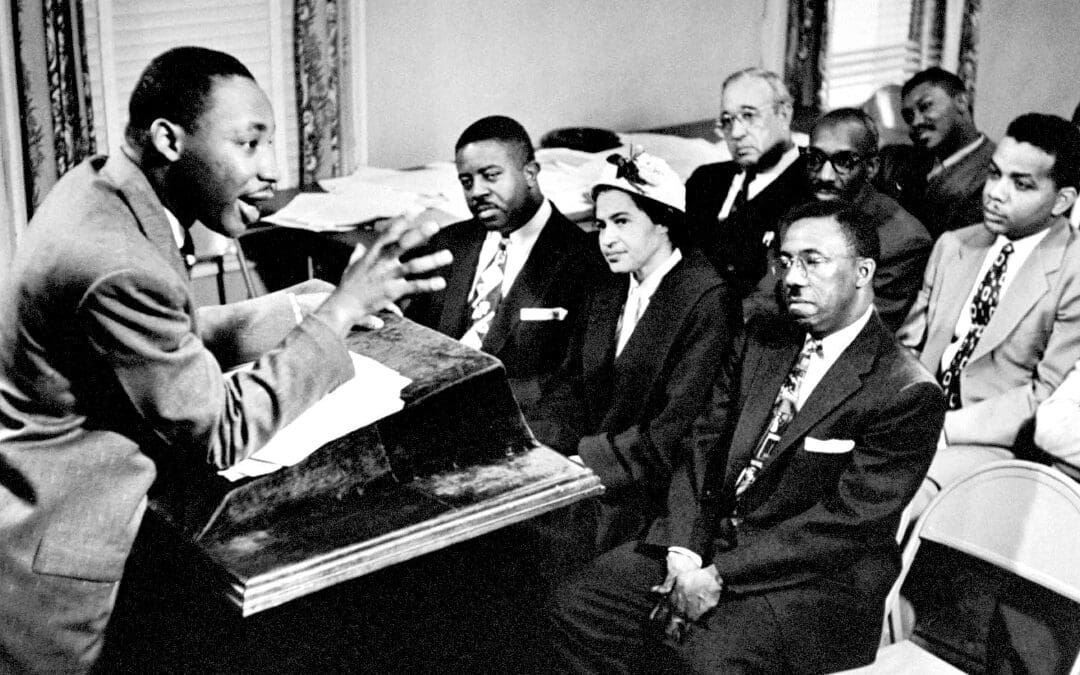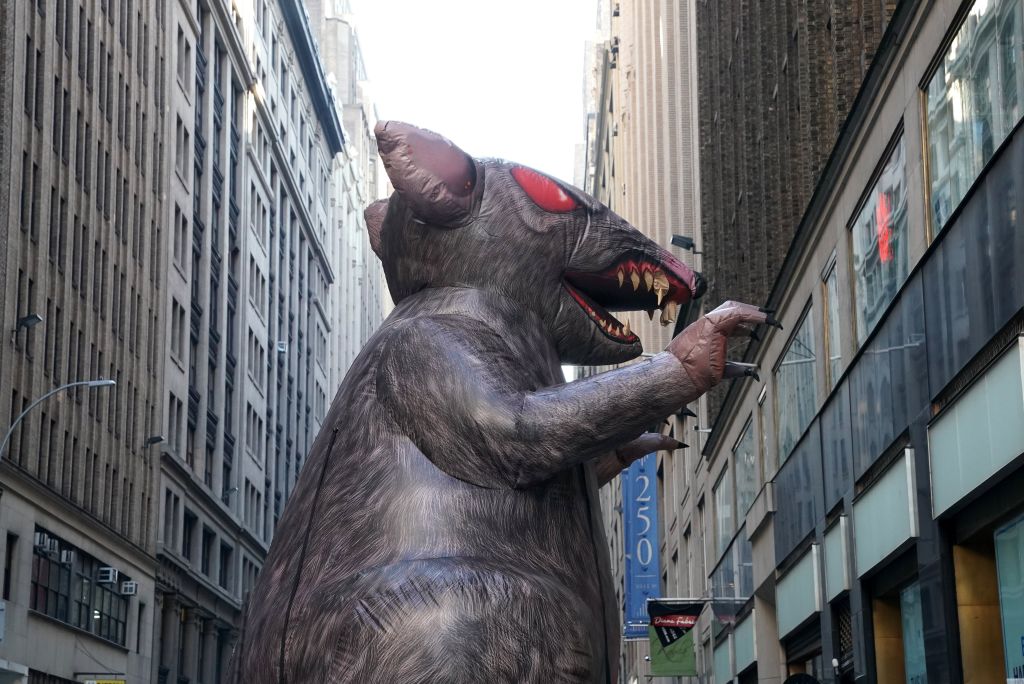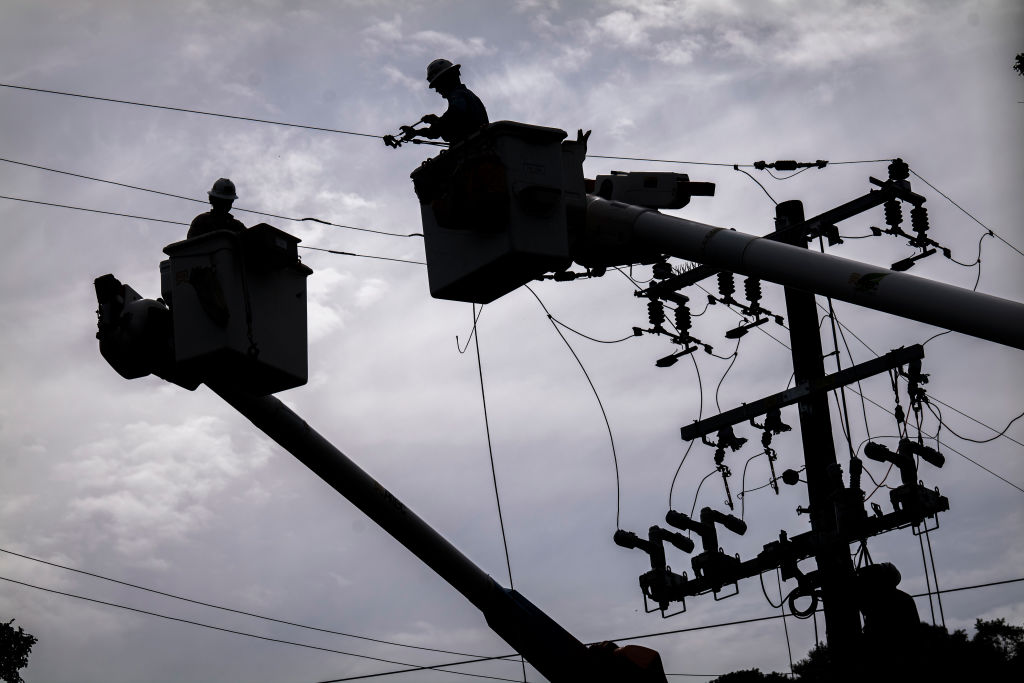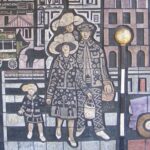
Welfare State Modernism’s Lost Future
March 17, 2025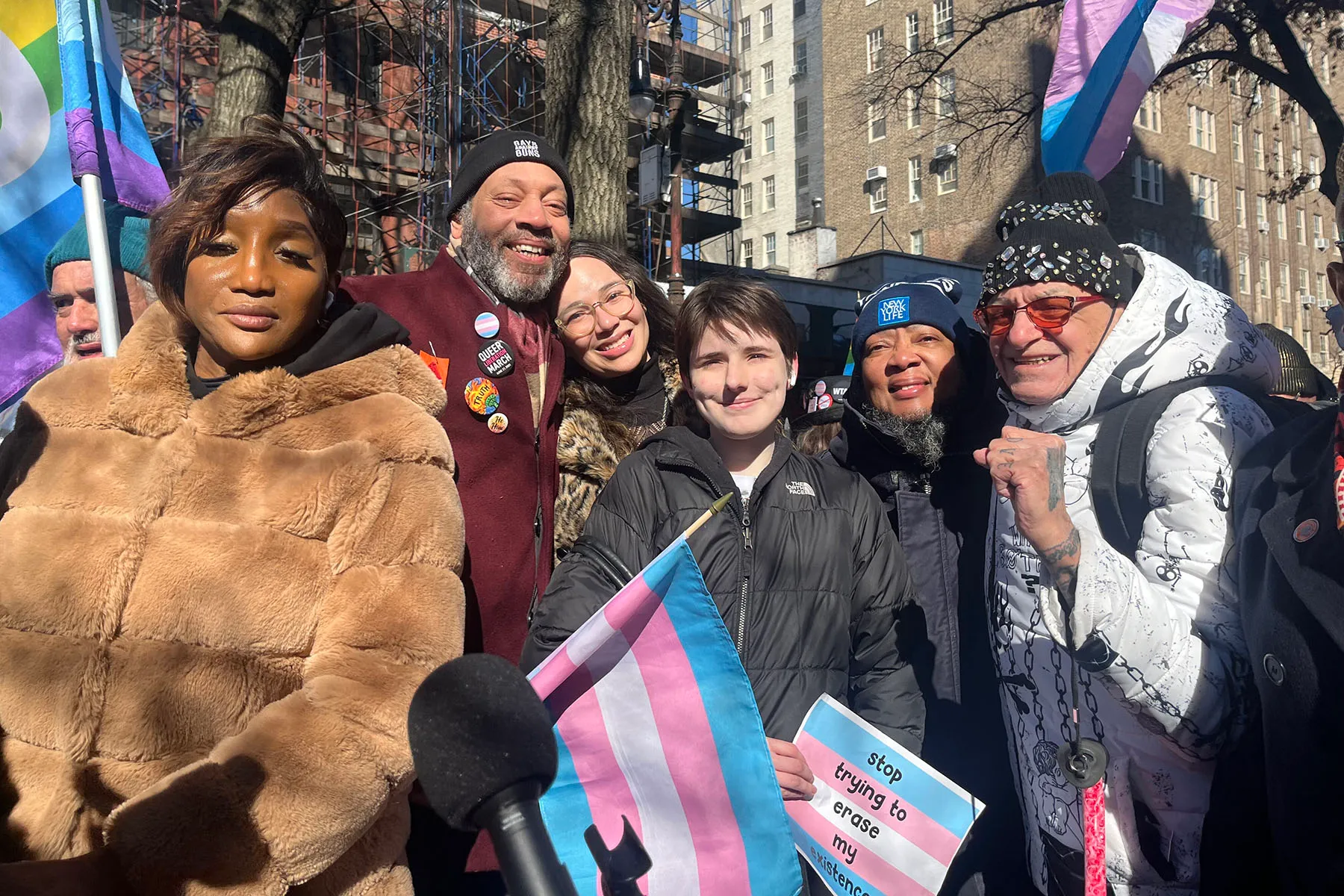
From Stonewall to now: LGBTQ+ elders on navigating fear in dark times
March 17, 2025
“It was very difficult to keep going when all our efforts seemed in vain,” Rosa Parks described her work in the 1940s and early ’50s. Getting her political start with the Scottsboro Boys case in the early 1930s, Rosa Parks was part of a small band of activists in the 1940s that sought to transform Montgomery’s NAACP into a more activist chapter. With union organizer E. D. Nixon, they worked for the next dozen years on voter registration and criminal justice (or the lack thereof) for black people: trying to prevent the legal lynching of black men and seeking justice under the law for black victims of white brutality, particularly black women who had been raped.
Over and over, they tried to find justice — and over and over, there was no justice. People got scared and refused to provide testimony. And when they did stand up, the cases went nowhere. Killers and rapists went free. Black men were executed for crimes they did not commit. Parks and her comrades filed affidavit after affidavit to the Justice Department, and the DOJ turned the other way.
This was dangerous and demoralizing work — there was “almost no way,” according to Parks, to see any progress. Amid that fearsome climate, NAACP comrade Johnnie Carr noted, many people “lost faith in themselves.” But their small crew kept at it, because, as Parks explained, “someone had to do something.” They couldn’t turn away. But she hated how a “a militant Negro was almost a freak of nature to [white people], many times ridiculed by others of his own group.”
We are in a frightening moment in this country, as the Trump administration pledges mass deportations, slashes essential government workers, and now appears to be launching an authoritarian crackdown on free speech and civil liberties. Many people have been asking me, as a historian of the civil rights movement: How do we resist this onslaught of racism, rights abridgment, and mass firings? What can we do? What measures will actually be effective?
The greatest lesson from studying the civil rights movement is not that there is one right way to make change. Rather, it is summoning the will to take action after action — even when there is little sign that it will do any good — that does. This is not the Hollywood-movie version of courage, where one day Rosa Parks refused to move on the bus, people rose up, and the law was changed. In the movie, it may take a couple years and a lot of work, but ultimately fear is faced, bravery is rewarded, court cases are won, and injustice is vanquished.
What the history of the civil rights movement actually shows is that when change happens, it is often because people were courageous for decades and sometimes generations in the wilderness. They took action with little reason to think it would do anything, and most of the time it didn’t. The fear didn’t go away — and sometimes it grew, because people saw firsthand the bad things that befell “troublemakers.” There is a well-worn adage that “insanity is doing the same thing over and over again and expecting different results.” But that is also, in key contexts, the definition of courage. It doesn’t work . . . until it does.
In 1954, finding many of her peers too “complacent,” Rosa Parks started a Youth Council for Montgomery’s NAACP. She was buoyed by the spirit of these young people; they worked on voter registration and organized a sit-in at the segregated downtown library. But most parents didn’t want their kids participating for fear of repercussions.
One who did was fifteen-year-old Claudette Colvin, who on March 2, 1955, refused to give up her seat on the bus and was arrested. Black Montgomerians were outraged, and Parks fundraised for Colvin’s case. Black community leaders circulated a petition for better treatment that they took to the city, which made promises it didn’t keep. (Parks refused to go: “I had decided I wouldn’t go anywhere with a piece of paper in my hand asking white folks for any favors.”) And then, community leaders backed away from Colvin’s case, seeing her as too young and feisty.
In August 1955, Rosa Parks attended a two-week workshop at Highlander Folk School, an organizer training school in Tennessee. She found the workshop extremely inspiring. Nonetheless, when organizers were asked what they would do when they returned home, Parks told those gathered that “Montgomery was the Cradle of the Confederacy, that nothing would happen there because blacks wouldn’t stick together. But she promised to work with those kids.” In other words, four months before her bus arrest, Rosa Parks left Highlander not seeing the possibility for a mass movement in Montgomery but placing her hopes in young activists.
Four days before her historic stand, Parks attended a packed mass meeting; the lead organizer on the Emmett Till case had come to town to bring the bad news that the two men who had lynched Till had just been acquitted. The massive attention they had worked to garner for the Till case was far beyond anything these Montgomery activists had ever secured and had — incredibly — led to an indictment. Yet now, Till’s killers had gone free. Angry and despairing, Rosa Parks was at the breaking point.
On December 1, 1955, coming home from work, when bus driver James Blake ordered her to move, she thought about Emmett Till and — “pushed as far as she could be pushed” — she refused. “I felt like if I got up, I approved of that treatment, and I didn’t approve.” Part of what made Parks’s action so courageous was that she had made stands before, other people had made stands before, and there was nothing to suggest that it would make a difference this time, and much to suggest that something bad could happen (which it did — she lost her job five weeks later and never found steady work in Montgomery again). But still, she saw an opening.
“One of the worst days” of her life, she wished someone else on the bus had joined her. Why didn’t they? Many people would be brave and accept the consequences if they knew their actions would make a difference. But the catch is that you don’t know until long after whether your courage will make a difference, and so like many people on the bus that day — and like Congressman Al Green’s fellow Democrats during Donald Trump’s address to Congress earlier this month — we often don’t join other people’s bold refusals.
Late that night, Parks decided to pursue her legal case. Hearing that, the Women’s Political Council (WPC) leapt into action, deciding to call for a bus boycott on Monday, the day Parks would be arraigned in court. WPC head Jo Ann Robinson went to Alabama State College where she was a professor and, in the middle of the night, ran off 35,000 leaflets to distribute around town: “Another woman has been arrested on the bus. . . . Boycott on Monday.”
Early the next morning, Nixon began to mobilize Montgomery’s handful of political ministers to support the Monday boycott. His first call was to Rev. Ralph Abernathy and then, around 6 a.m., Nixon phoned Martin Luther King to tell him about the boycott. Nixon wanted to use King’s church, centrally located downtown, for a meeting to coalesce support for the protest.
The twenty-six-year-old King hesitated. The Kings had a two-week-old new baby, and he wasn’t sure he could commit, given his new family responsibilities. “Let me think about it a while and call me back,” he told Nixon. A few hours later, when Nixon called back, King agreed they could meet at his church, and they worked to find other ministers and community leaders to attend that evening. Looking back on that Friday morning, there was no lightning bolt that showed King what to do. Similar to Parks, part of King’s gift was the ability to move forward despite fear and uncertainty.
Rosa Parks worried about whether the community would support her action. And there is a new myth that they did so because she was the “right” person. But Montgomery’s black community was at the breaking point in no small part because of Colvin’s arrest eight months earlier. Many of Montgomery’s activists were nervous that weekend: Would people stay off the bus on Monday? The Kings got up at 5:30 to see when the buses began their routes at 6 a.m. “Come quickly,” Coretta shouted at Martin. “There was not one person on that usually crowded bus! . . . We were so excited we could hardly speak coherently.” Parks too found that first day “unbelievable.” Still, she wondered why “we had waited so long to make this protest.”
After Parks’s appearance in court, a group of Montgomery’s black male leaders (but not Parks or Robinson) met to discuss the day’s successful protest. Many of the men still feared being publicly associated with the action. Eventually, Nixon exploded in anger at their hesitation: “Where are the men?” King, who had entered late, said he wasn’t a coward and agreed to speak that night at the mass meeting.
That night, a huge crowd packed into Holt Street Baptist Church with thousands more congregating outside. King was terrified, and he had only a few minutes to prepare his thoughts. But buoyed by the power of the day’s protest, the community decided to extend the one-day boycott into an indefinite one. Being in action had changed what seemed possible. To sustain it, they built a tremendously organized carpool system, setting up forty pickup stations across the city. At its height, they were giving ten to fifteen thousand rides a day.
Police harassed the carpool system mercilessly, giving out scores of tickets. Robinson got seventeen in the first two months. On January 26, after King gave some people a ride, police pulled him over, supposedly for going thirty in a twenty-five-mile-per-hour zone. Realizing it was “that damn King fellow,” the police didn’t give him a ticket but made him get in their car and drove him around the city — he was terrified they intended to kill him. Finally they took him to jail.
Four days after his speeding arrest, the Kings’ home was bombed. Both Coretta and baby Yolanda were home. She heard a thump and moved fast, succeeding in getting them out unscathed. Furious and terrified by the news, both Martin’s and Coretta’s fathers came to Montgomery that night to pressure them to leave immediately — or, at the very least, to get Coretta and Yolanda out of there. But Martin and Coretta wouldn’t budge. “I knew I wasn’t going anywhere,” Coretta explained. The next morning at breakfast Martin was grateful: “Coretta . . . you were the only one who stood with me.” Facing that pressure, where it would have been more than understandable to leave with the baby or to insist Martin put their family’s protection first, Coretta Scott King cut a different path. The trajectory of the boycott and the emerging civil rights movement would have been very different had she flinched.
Claudette Colvin stepped forward again — being willing to be one of four women on a federal case filed against bus segregation. (No ministers were willing to be on the suit.) That case, Browder v. Gayle, went to the Supreme Court and ultimately desegregated Montgomery’s buses on December 21, 1956.
All of those actions — a decade of Parks’s, Nixon’s and the Montgomery NAACP’s work, Colvin’s arrest, Parks’s bus stand, the WPC’s call for a boycott, the Kings’ willingness to step forward and stand fast, a 382-day community boycott, a federal court case — created this victory. Activists weren’t sure. They and their interventions weren’t perfect. But it was the accumulation of efforts that mattered.
What this history demonstrates is that it isn’t clear in the moment which actions will work. Many didn’t seem to. But it was the ability to step forward and act again and again amid that fear and uncertainty that made the difference.
Great Job Jeanne Theoharis & the Team @ Jacobin Source link for sharing this story.

